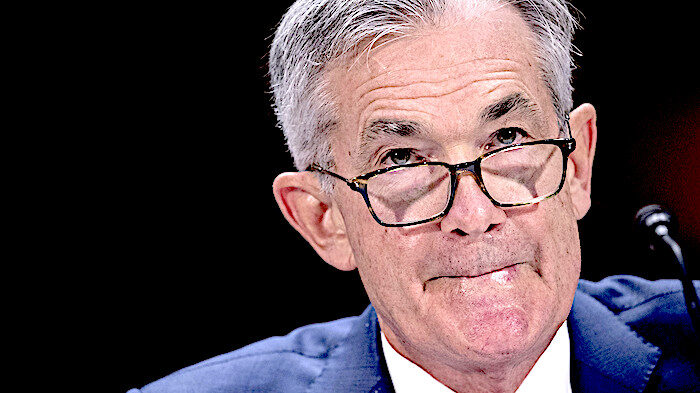
© MarketWatchFED Chair Gerome Powell
At last week's FOMC* press conference, Chair Powell was unequivocal about his discomfort with persistently high inflation. Had the January FOMC been a forecast meeting, he told us, he would have revised up his inflation forecast for 2022 by "a few tenths." The Fed is set on tightening policy this year.
Bringing down inflation through monetary policy means slower growth, but how much inflation and growth will decline is the question.A dirty little secret about the economics profession is how imprecisely we understand the inflation-generating process. The Fed and most mainstream economists have in mind a version of an "expectations-augmented Phillips curve" to describe cyclical inflation. Inflation is driven by inflation expectations and whether the economy has slack and inflation falls or is overextended and inflation rises. That cyclical component ignores other short-term factors, like
swings in oil prices or the current supply chain frictions, that can temporarily push inflation up or down. Framing inflation this way has some thorny implications for the next few years,
particularly if most of current inflation is cyclical, not temporary.Core PCE** inflation just hit roughly 5%, or about 3 percentage points above the Fed's target. If the extra inflation is cyclical,
policy will have to slow the economy to create enough slack to bring it down. If it is mostly Covid driven and temporary, inflation will come down on its own. Our house view is that the majority of the extra inflation is Covid driven, not cyclical,
but what if we are wrong?
Suppose two-thirds of the extra inflation (2 percentage points) is cyclical and only one-third is temporary. The Fed's baseline estimate of the Phillips curve has a slope of about 0.1, that is,
a 1-percentage-point increase in the unemployment rate lowers core PCE inflation by only one-tenth of a percentage point. Simple arithmetic says that a 20-percentage-point increase in unemployment is needed to bring inflation down by 2 percentage points. But even if the relationship is 5 times larger, as may have been the case decades ago, the Fed would need to orchestrate a 4-percentage-point increase in the unemployment rate to wring out those 2 percentage points of inflation.
Any time unemployment has risen by 50bp, we have had a recession.Of course, the Fed does not want to intentionally cause a recession, so something would have to give.
The other refuge, of course, is inflation expectations. If the Fed can convince everyone that inflation will get back to 2%, the trade-off is much less painful. But some measures of inflation expectations are highly sensitive to realized inflation, whereas others barely budge. (
Others have criticized the prominence of inflation expectations in macro analysis, see Rudd, 2021).The real question is whether under the current circumstances, the inflation expectations that matter will move simply because the Fed acts, or if inflation has to come down first
. If the latter is true, we are still stuck.So if the bulk of current inflation is cyclical -- a recession or years of high inflation. Chair Volcker opted for recession, but inflation in the 1970s was much, much higher. I suspect Chair Powell will not deliberately engineer a recession. The challenge, of course, is knowing how much policy tightening is too much. To be clear, our baseline view is that most of the inflation will prove temporary, but it always pays to ask
"what if we are wrong?"*Federal Open Market Committee
- - Personal Consumption Expenditure
Comment: The FED puts lipstick on the pig. Signpost up ahead: System failure and global depression. It's not what's on paper...it's what's in your pocket.